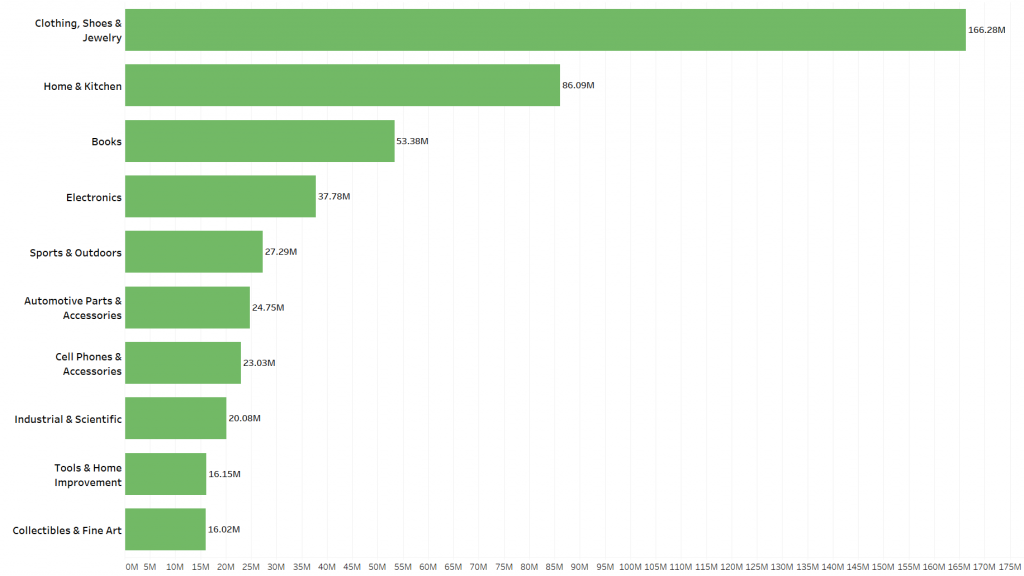January 14, 2019
The Downfall of Department Stores

By: burgundy bug
Chill-hop artist & producer XtaSeay at the mall
Source: All Around the Mall | Penelope Peru Photography P³
The same department stores that shaped consumerism as we know it today are failing to evolve with the market. Big names such as Macy’s, J.C. Penney, and Sears have been forced to close their doors across the country. Not to mention their stocks haven’t been worth more than mere pocket change in years.
Who’s to blame? The brand or the consumer?
A Bit of Context…
A department store is a large retail space offering an array of products. Their inventory is often so large the store must be divided into multiple departments.
For example, many department stores offer women, men, adolescent, as well as children’s clothing departments. It’s also not uncommon to see shoe, home & lifestyle, beauty, jewelry, electronics, as well as outdoor goods all sold within one department store.
According to Statista, department stores are currently a $12 billion dollar industry in the United States, with Macy’s, Kohl’s, Nordstrom, and J.C. Penney serving as some of the largest establishments within the industry.
The department store industry itself has been around for quite some time. According to BBC’s A History of the Department Store, the first of its kind may have been Harding, Howell & Co’s Grand Fashionable Magazine established at the Pall Mall in St. James, London in 1796.
Many of the establishments sprinkled across our malls and cities today have been around for well over one hundred years.
- Lord & Taylor originally opened in New York City as a dry goods store in 1824, according to their website.
- Macy’s originally opened in New York City as a “small, fancy dry goods store” in 1858, according to their website.
- Sears originally started as railroad station agent Richard Sears’ side business for selling watches in Minnesota in 1886, according to CNN.
- Nordstrom originally opened in Seattle, WA as a shoe store in 1901, according to their website.
- J.C. Penney originally opened in Wyoming in 1902, according to their website.
- Saks Fifth Avenue originally opened in New York City on September 15, 1924, according to their website.
Department stores gained traction throughout the 20th century due to the industrial revolution. Their popularity was further perpetuated by the generation of Baby Boomers who birthed the very culture of consumerism as we know it today.
“BUY 2, GET 1 FREE!” sign
Source: “Buy 2, Get 1 Free!” Sign | Penelope Peru Photography P³
The Downfall of Department Stores
Needless to say, the department store industry peaked as the 20th century drew to a close.
According to a report released by the U.S. Census Bureau in 1998, department stores had a total of $278.6 billion in sales.
In 2018, the U.S. Census Bureau reported department store sales had fallen to $128.3 billion.
Sales dropping $150 billion dollars market wide over 20 years in an industry that had soared throughout the last century certainly is practically a death sentence.
In line with the demise of department stores, Macy’s had announced in 2016 they would be closing 100 of their stores with eight more closing in early 2019, according to Business Insider. The retailer has already closed 81 of their stores, according to an article released by CNBC in 2018.
J.C. Penney has suffered an even worse fate. Although their stock once traded for as high as $87.18 in February of 2007, it sank to below a dollar for the first time in history towards the end of Dec. 2018, according to CNBC.
Although J.C. Penney had already closed 140 stores in 2017, according to CNBC, they are preparing to close anywhere from 20 to over 100 additional locations. More information will be available in their next earnings report, scheduled for release on Feb. 28.
However, neither of these retailers have taken as huge of a hit as Sears. What was once the largest retailer in America was forced to file for bankruptcy in October of 2018 due to an outstanding debt of $134 million dollars, according to CNN.
According to the Chicago Tribune, Sears is scheduled to go to auction sometime today after this article is released (Jan. 14, 2019).
Why Department Stores are Struggling to Survive
Although department stores had once paved the way for revolution, they are struggling to keep up with the future of commerce.
Who’s to Blame?
We can’t necessarily pin it all the blame on these brands or the consumer, if we’re pointing fingers.
E-Commerce has played the devil’s advocate in driving department stores towards their ultimate demise.
According to data collected by BigCommerce, 51% of American’s prefer shopping online to visiting retail stores. This trend is especially prevalent among younger generations, with 67% of Millennials and 56% of Gen Xers reporting they would rather shop online.
Although customers have had the ability to make purchases from Macy’s, J.C. Penney, and Sears from the comfort of their couch for years, their online stores aren’t enough to serve as their saving grace – despite deals that are “online-exclusives”, regularly circulating email offers, as well as advertising across various social media platforms.
Unsurprisingly, competitors such as Amazon have turned over a large portion of department stores’ target market. While retail stocks are pennies on the dollar, one share of stock in Amazon is $1,615.11 as of Jan. 14, 2019 @ 7:25 AM, according to Yahoo! Finance.
The value of Amazon’s stock as of Jan. 14, 2019
Source: Amazon.com, Inc. (AMZN) | Yahoo! Finance
Amazon operates much like a digital department store. They have numerous departments including apparel, home & lifestyle, beauty, accessories, electronics, outdoor, and more. There were over 562.4 billion products on Amazon as of Jan. 2018, according to ScrapeHero.
Amazon’s top 10 departments
Source: How Many Products Does Amazon Sell? – January 2018 | ScrapeHero
With members of Amazon Prime receiving benefits such as free 2-Day and same day shipping, a video streaming service, among other perks, convenience at low costs has made Amazon irresistible to consumers.
Think about it. Would you pay more for an item + shipping and handling from retailers such as Nordstrom or Bloomingdales, when you could get the same product cheaper with free shipping AND additional benefits?
I didn’t think so.
However, E-Commerce isn’t the sole culprit. There has also been a shift in consumerism, especially among Millenials.
A Shift in Consumerism
Unlike their parents, the younger crowd isn’t buying “TVs and Watches,” CEO and Co-Founder of Blueboard Taylor Smith told CNBC.
“We’re renting scooters and touring Vietnam, rocking out at music festivals, or hiking Machu Picchu,” Smith continued.
Social media is largely responsible for this phenomenon. Thanks to the ability to show off where you are, what you’re eating, or what you’re doing with the tap of a finger, millennials would rather share photographs of trips they’ve taken around the world over a designer handbag.
Afterall, materialistic possessions are temporary. While jewelry may be a rather sound investment, as it tends to acrew value from generation to generation, how long are a pair of $2,000 sneakers really going to last you?
Christian LouBoutin and Gucci Sneakers Photographed at Neiman Marcus
Source: Neiman Marcus | Penelope Peru Photography P³
Millennials would rather have the memory and photos of traveling our vast, blue marble for that price tag.
In Conclusion
Needless to say, neither department stores nor consumers are solely to blame for the downfall of department stores. E-Commerce, especially with the rise of Amazon, has played a hand in effectively squandering this industry. Furthermore, Millennials are a bit less materialistic than previous generations, preferring to spend their money on “experiences” over physical possessions.
Interested in having content featured in an upcoming blog post or issue of The Burgundy Zine? Head on over to the submissions page!
For all other inquiries, please fulfill a contact form.









